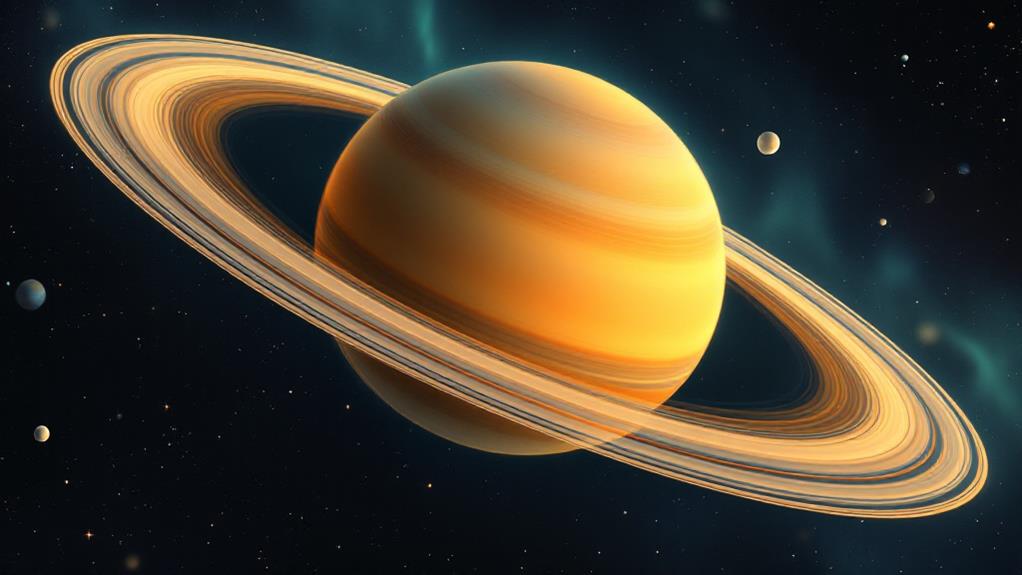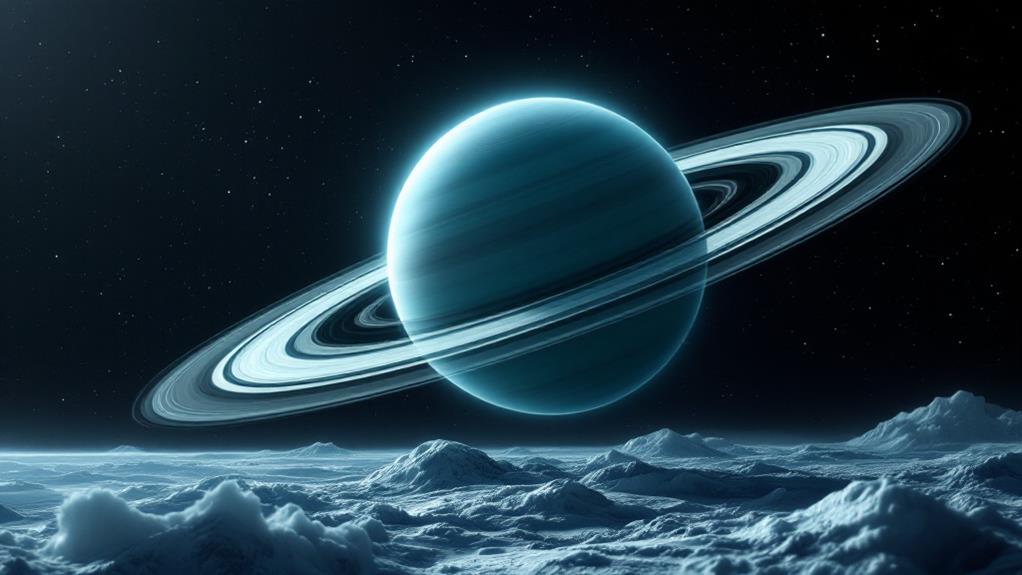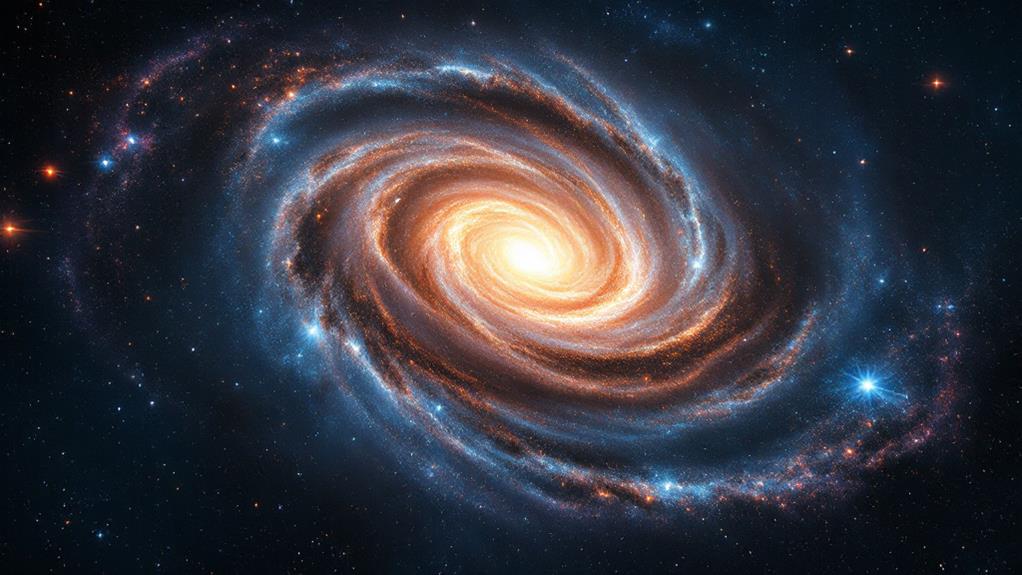Interesting Facts About Space: Surprising Discoveries Beyond Earth

Space is full of mind-bending wonders that challenge our understanding of reality. You'll find invisible dark matter shaping galaxies, ripples in spacetime called gravitational waves, and thousands of alien worlds beyond our solar system. The universe is expanding at an accelerating rate, driven by mysterious dark energy. Black holes warp the very fabric of space and time, while the cosmic microwave background gives us a glimpse of the infant universe. Interstellar travel, once purely science fiction, is now being seriously investigated by scientists. These cosmic marvels are just the beginning of what awaits you in the vast expanse beyond Earth.
The Cosmic Microwave Background
In spite of its name, the Cosmic Microwave Background (CMB) isn't a musical genre or a new type of radiation therapy. It's actually the oldest light in the universe, dating back to about 380,000 years after the Big Bang. You might wonder how we can detect something so ancient. Well, this faint glow permeates the entire cosmos and can be observed using specialized radio telescopes.
The CMB is often referred to as the cosmic background radiation, and it's a vital piece of evidence supporting the Big Bang theory. When the universe was young and hot, it was filled with a dense plasma of electrons, protons, and photons in thermal equilibrium. As the universe expanded and cooled, atoms formed, allowing light to travel freely for the first time.
This primordial light has been stretching with the expansion of the universe for billions of years, shifting from visible light to microwave wavelengths. By studying the tiny fluctuations in the CMB's temperature and polarization, scientists can learn about the early universe's composition, structure, and evolution, making it an indispensable tool in cosmology.
Dark Matter's Invisible Influence
While the CMB helps us understand the early universe, there's another cosmic mystery that's shaping our galaxy right now. Dark matter, an invisible substance that makes up about 85% of the universe's mass, exerts a powerful influence on the cosmos.
You can't see or touch dark matter, but its gravitational effects are unmistakable. It acts like cosmic glue, holding galaxies together and influencing their rotation. Without dark matter, the stars in our Milky Way would fly apart, unable to maintain their orbits.
Despite its vital role, dark matter's unseen composition remains a puzzle. Scientists have proposed various candidates, from weakly interacting massive particles (WIMPs) to axions, but none have been definitively detected. You might wonder how we know it exists at all. The answer lies in its gravitational impact on visible matter, which we can observe and measure.
Dark matter's invisible influence extends beyond individual galaxies. It forms a vast cosmic web, guiding the formation of galaxy clusters and shaping the large-scale structure of the universe. As you gaze at the night sky, remember that the visible stars are just a fraction of what's really out there.
Exoplanets and Alien Worlds

Beyond our solar system lies a vast frontier of alien worlds known as exoplanets. These distant planets orbiting other stars have enthralled astronomers and the public alike since their first unveiling in 1992. Today, we've confirmed over 5,000 exoplanets, with thousands more awaiting verification.
You might be surprised to learn that exoplanets come in a staggering variety of forms. Some are "hot Jupiters," gas giants orbiting perilously close to their stars. Others are "super-Earths," rocky worlds larger than our own but smaller than Neptune. Scientists have even found exoplanets that could potentially harbor life.
The search for habitable exoplanets is a key focus of modern astronomy. Researchers use advanced telescopes to study exoplanetary atmospheres, looking for signs of water vapor, oxygen, or other biosignatures that might indicate the presence of life. While we haven't found a true Earth twin yet, some exoplanets like TRAPPIST-1e and Proxima Centauri b orbit within their star's "habitable zone," where liquid water could exist on the surface. As our technology improves, we're getting closer to answering the age-old question: Are we alone in the universe?
Black Holes' Mysterious Nature
Lurking at the hearts of galaxies and scattered throughout the cosmos, black holes remain some of the most enigmatic objects in our universe. These gravitational behemoths come in various sizes, from stellar-mass black holes to supermassive giants. The black hole mass distribution ranges from about three times the mass of our Sun to billions of solar masses.
You might wonder what happens when you approach a black hole. As you near its event horizon, the point of no return, time itself begins to warp. Light bends, and your perception of the universe distorts. Black hole event horizons mark the boundary beyond which nothing, not even light, can escape. It's a cosmic point of no return that continues to baffle scientists.
Recent breakthroughs have allowed us to "see" black holes for the first time. The Event Horizon Telescope captured the first image of a black hole's silhouette in 2019, revolutionizing our understanding of these cosmic monsters. As we continue to study black holes, we're uncovering new mysteries about the fabric of spacetime and the fundamental laws of physics.
The Expanding Universe
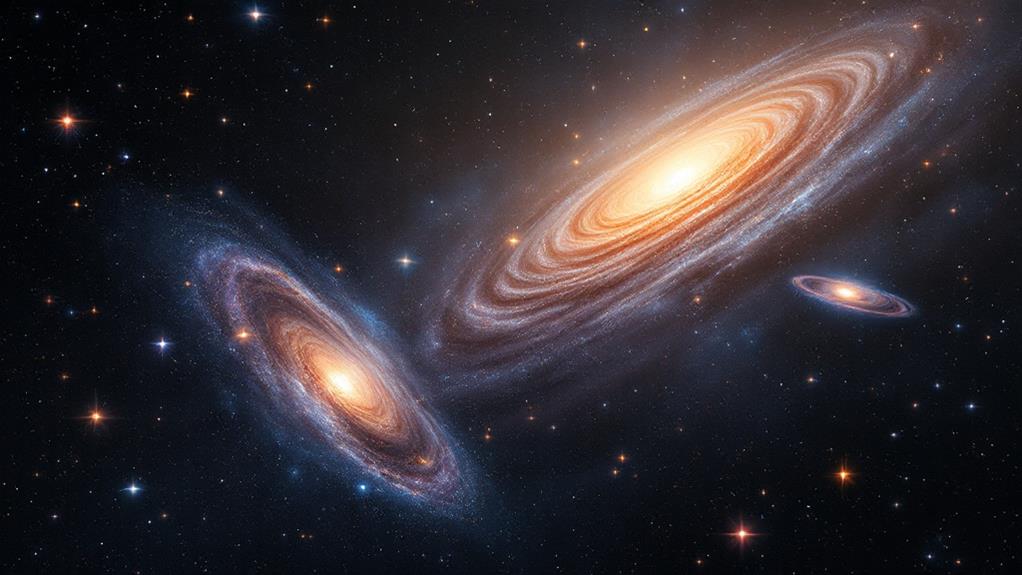
One of the most mind-bending revelations in cosmology is that our universe is expanding. This concept, known as space-time expansion, challenges our everyday understanding of reality. You might wonder how scientists uncovered this phenomenon. In 1929, Edwin Hubble observed that distant galaxies were moving away from us, and the farther they were, the faster they moved.
What's even more astonishing is that this expansion isn't just continuing—it's accelerating. The accelerating universe theory suggests that a mysterious force called dark energy is driving this expansion. Some fascinating aspects of this cosmic growth:
- The expansion affects space itself, not the objects within it
- Galaxies aren't moving through space; space is stretching between them
- The expansion rate is measured using the Hubble constant
- Light from distant objects stretches, causing a "redshift" effect
As you contemplate the expanding universe, you'll realize that our cosmic home is far more versatile and enigmatic than we once thought. This ongoing expansion raises questions about the universe's future and the nature of space-time itself.
Interstellar Travel Possibilities
Numerous possibilities for interstellar travel enthrall scientists and dreamers alike. You might think it's impossible to reach distant stars, but researchers are exploring innovative ways to make it happen. One of the most exciting concepts is faster than light travel, which could theoretically allow you to surpass the cosmic speed limit. While it sounds like science fiction, some physicists believe it might be achievable through methods like the Alcubierre drive, which warps space-time around a ship.
Another intriguing option is wormhole technology. These hypothetical tunnels through space-time could provide shortcuts across vast distances. If you could create and stabilize a wormhole, you'd potentially travel light-years in moments. However, the energy requirements and technical challenges are immense.
More conventional approaches include generation ships, where entire societies would live and die during centuries-long expeditions. Alternatively, you could use suspended animation or advanced propulsion systems like nuclear pulse propulsion or antimatter rockets. While interstellar travel remains a distant dream, ongoing research continues to expand the possibilities of what's achievable, bringing us closer to exploring the stars.
Gravitational Waves
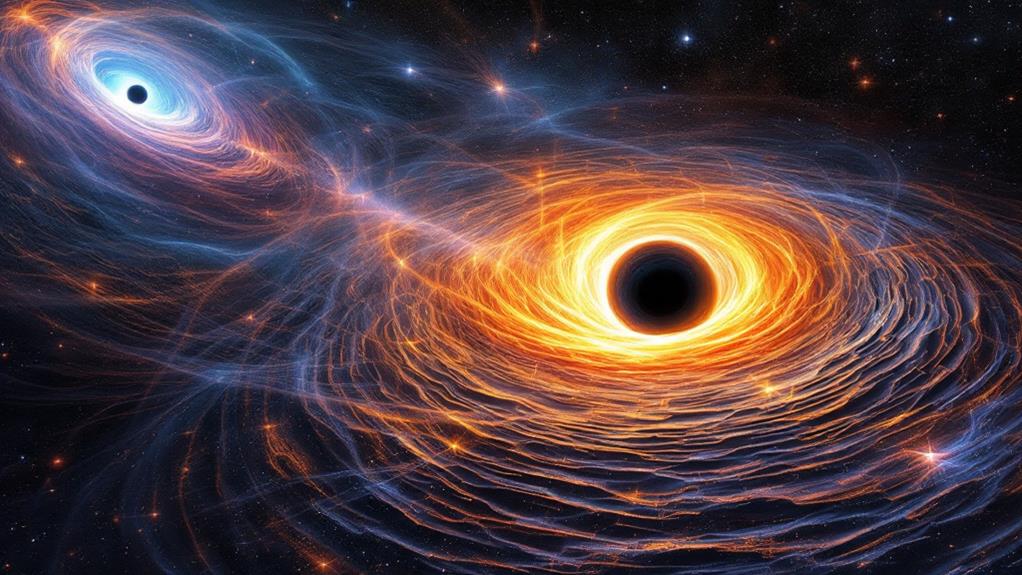
Gravitational waves ripple through the fabric of space-time, carrying information about some of the universe's most dramatic events. These elusive waves, predicted by Einstein's theory of general relativity, were first directly detected in 2015. They're caused by massive cosmic events like black hole mergers or neutron star collisions, creating spacetime distortion that propagates across the universe.
Detection techniques for gravitational waves have advanced considerably in recent years. Scientists use laser interferometers, such as LIGO and Virgo, to measure minute changes in the distance between precisely positioned mirrors. These incredibly sensitive instruments can detect distortions smaller than the width of an atomic nucleus.
Gravitational waves:
- They travel at the speed of light
- They can pass through matter unimpeded
- They carry information about the early universe
- They allow us to "hear" cosmic events
Solar System's Hidden Secrets
Beyond the familiar planets and moons, our solar system harbors a wealth of hidden secrets. You might be surprised to learn that there are potentially thousands of uncover objects lurking in the outer reaches of our cosmic neighborhood. These include rogue planets, celestial bodies that drift through space without orbiting a star, and dwarf planets like Pluto, Eris, and Ceres.
The Kuiper Belt, a region beyond Neptune's orbit, is home to countless icy bodies and potential dwarf planets waiting to be unravel. Scientists believe there could be up to 100,000 objects larger than 100 kilometers in diameter within this region. Even more intriguing is the hypothetical Oort Cloud, a vast sphere of icy debris surrounding our solar system, which may contain trillions of comets.
Recent studies suggest that our solar system might have once harbored an additional gas giant planet, which was ejected early in its formation. This rogue planet could still be wandering the galaxy, carrying secrets about our system's turbulent past. As technology advances, we're continually uncovering new mysteries and hidden treasures within our cosmic backyard.
The Search for Extraterrestrial Life
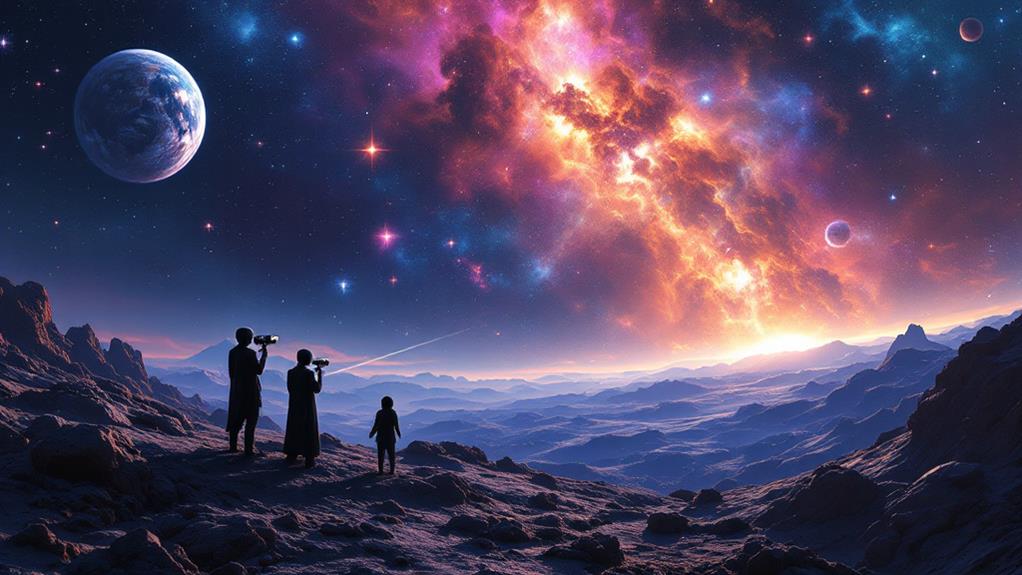
As we peer into the vastness of space, the search for extraterrestrial life remains one of humanity's most engrossing pursuits. Scientists are tirelessly exploring our cosmic neighborhood for signs of alien biology, using advanced telescopes and space probes to analyze distant planets and moons.
You might be surprised to learn that the search isn't just about finding little green men. It's a complex quest that involves:
- Studying exoplanets for habitable conditions
- Analyzing atmospheric compositions for biosignatures
- Searching for liquid water on celestial bodies
- Detecting radio signals for potential interstellar communication
The field of astrobiology has grown exponentially, combining various scientific disciplines to understand how life might evolve in different environments. You'll find researchers developing new techniques to detect microbial life forms that could survive in extreme conditions, like those found on Mars or Europa.
Interstellar communication efforts, such as the SETI project, continue to scan the skies for artificial signals. While we haven't made contact yet, the possibility of uncovering extraterrestrial intelligence keeps scientists and the public alike enthralled by the endless possibilities that lie beyond our planet.
